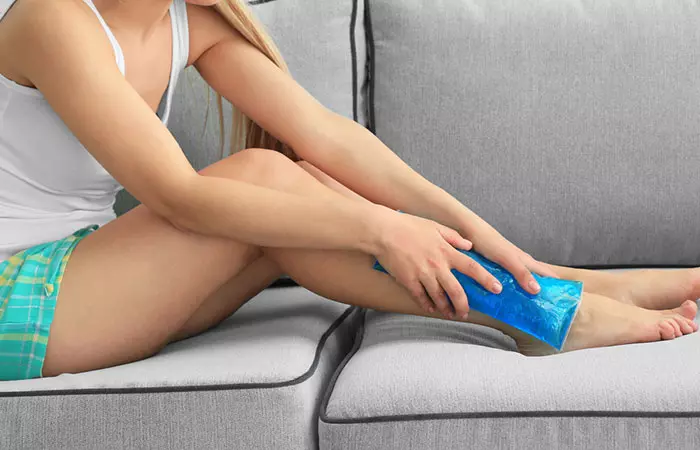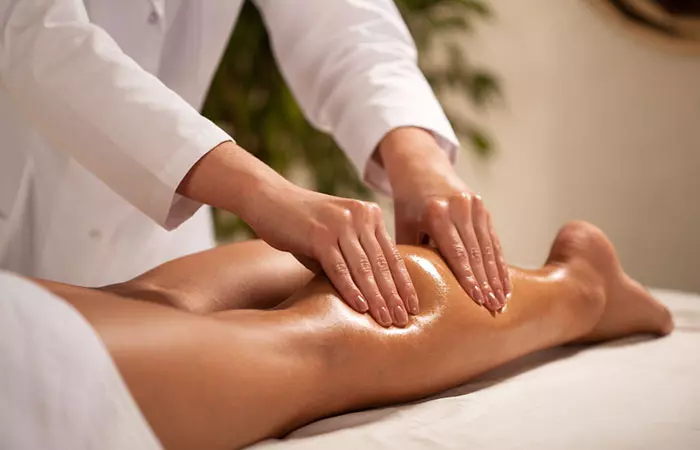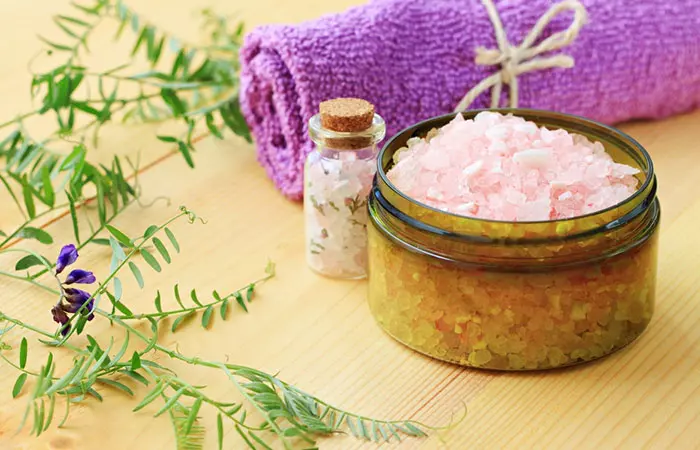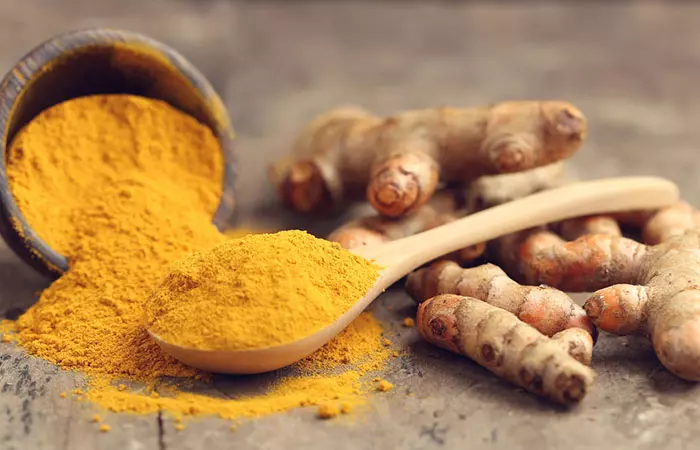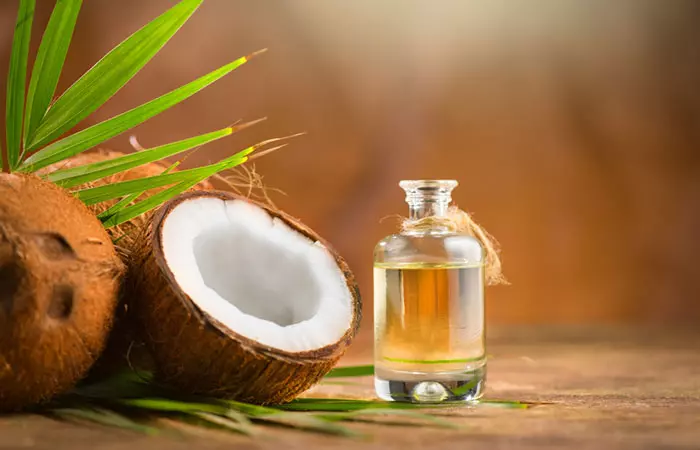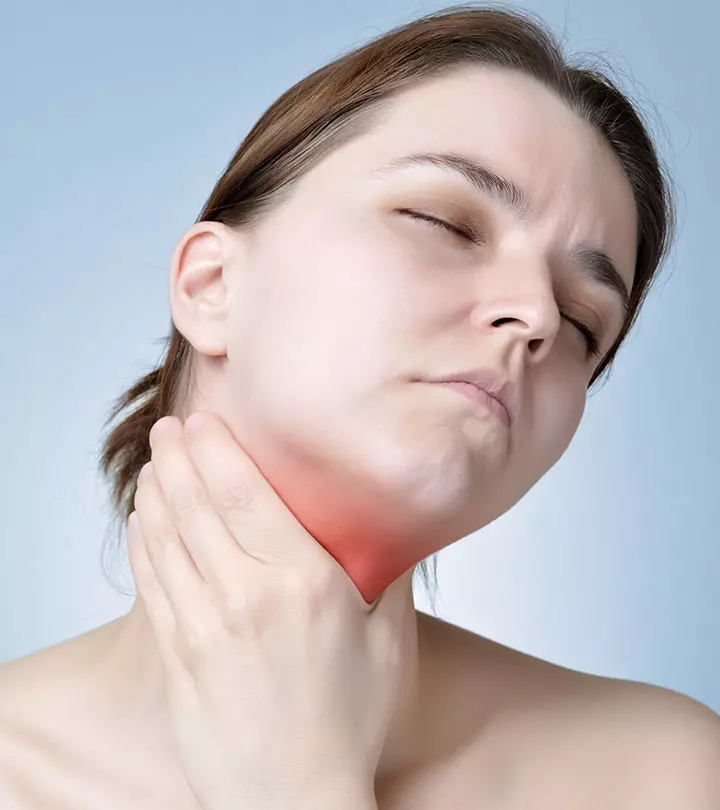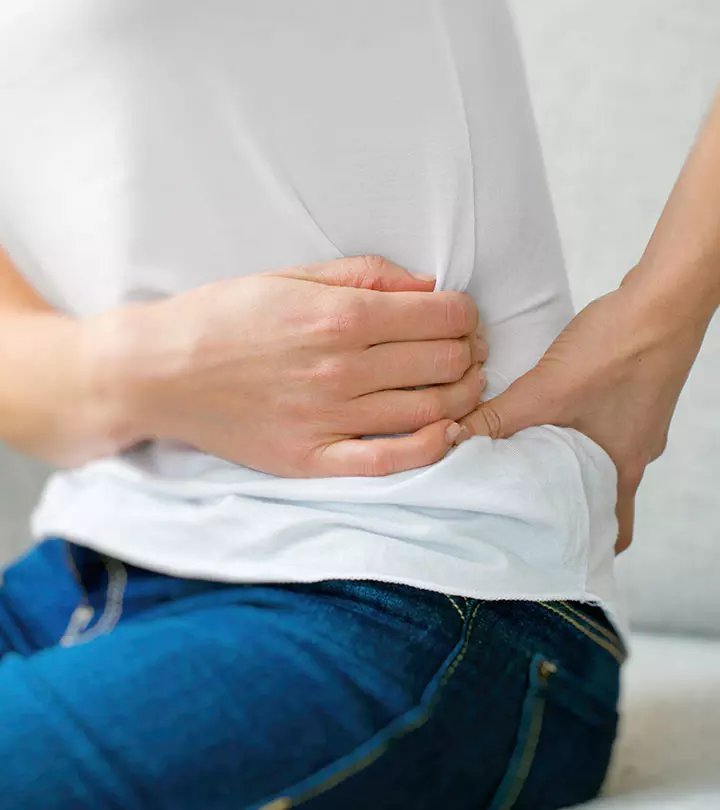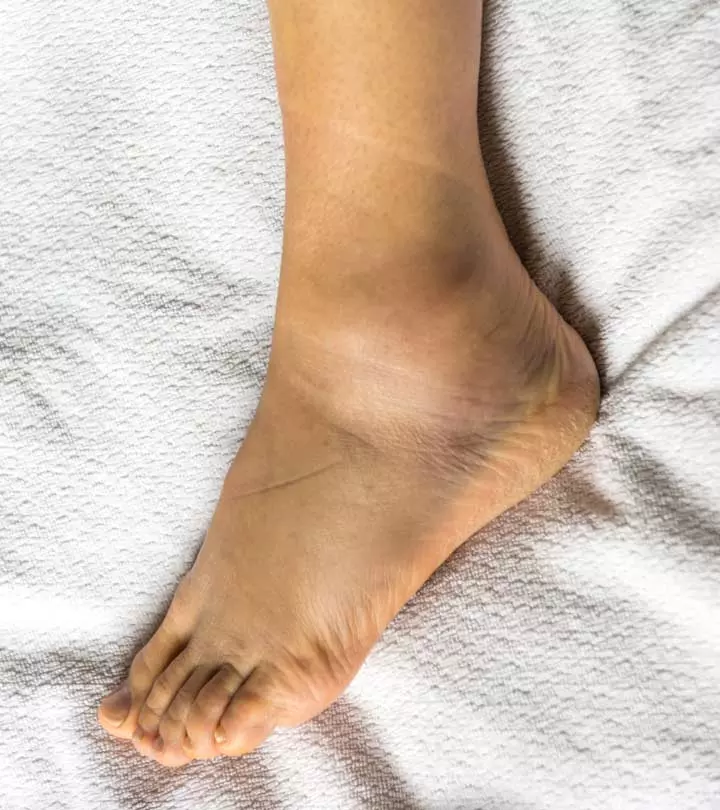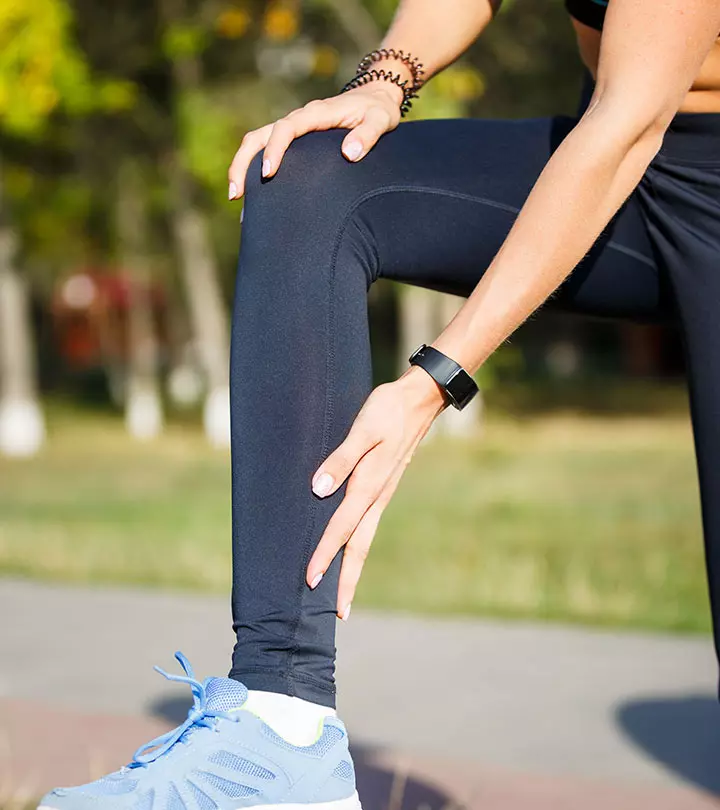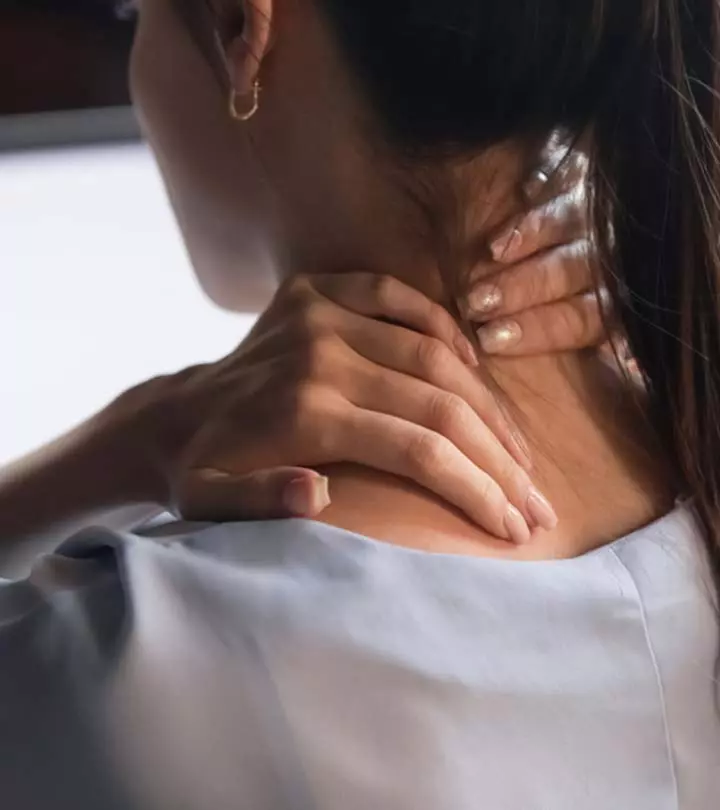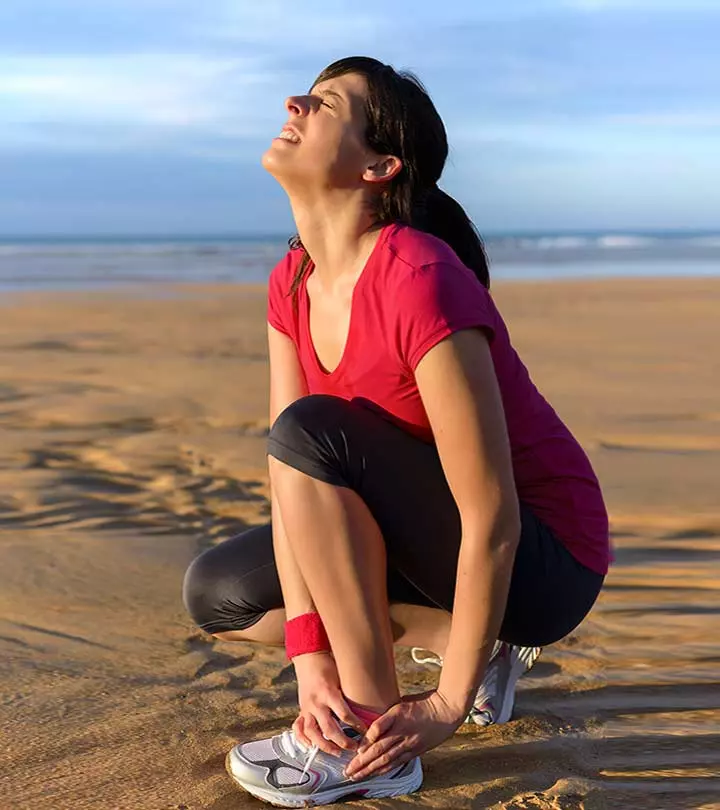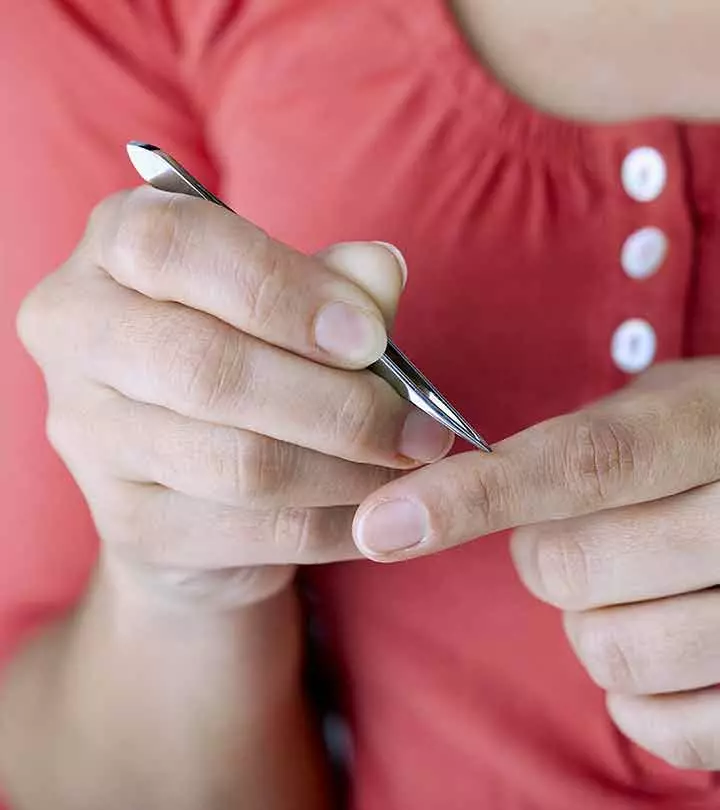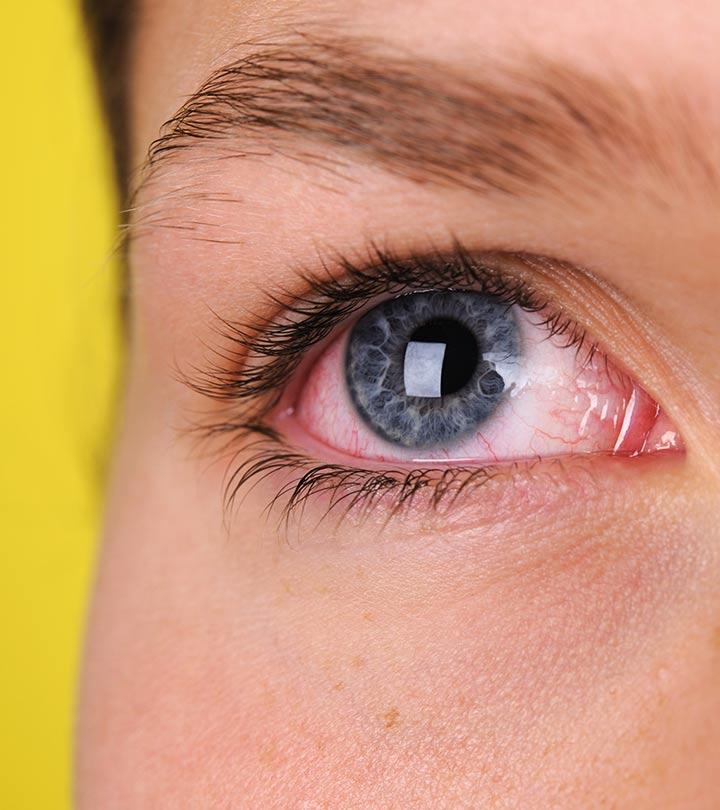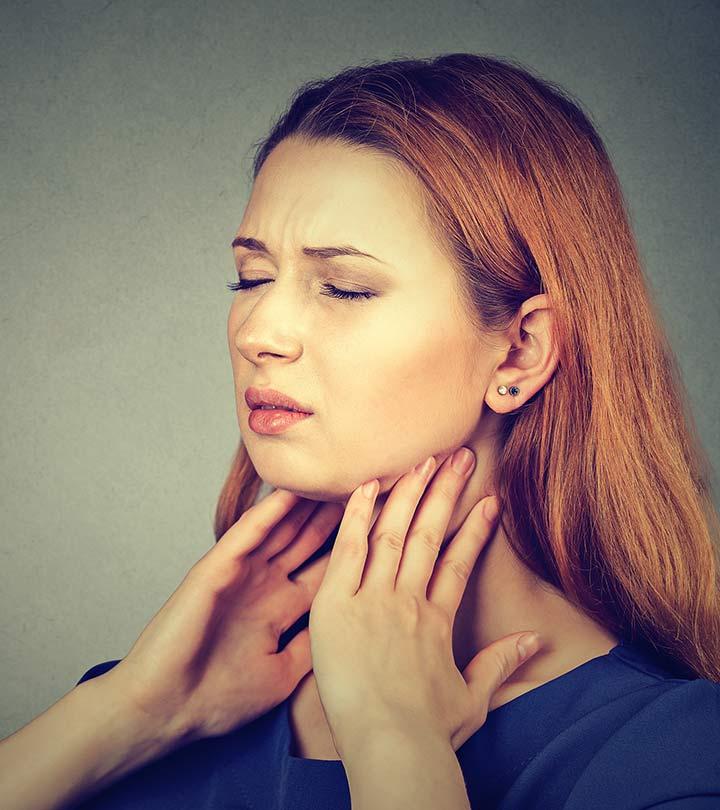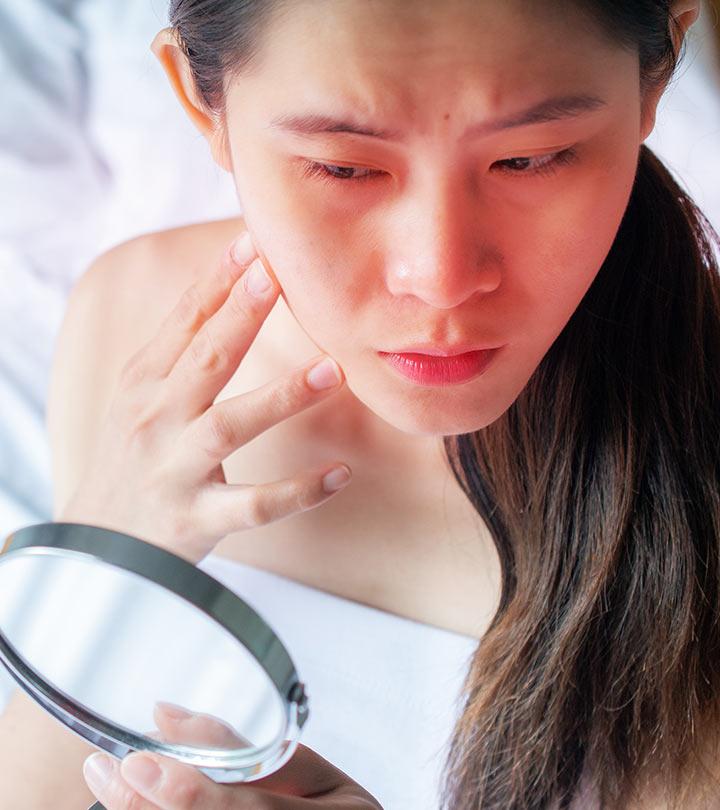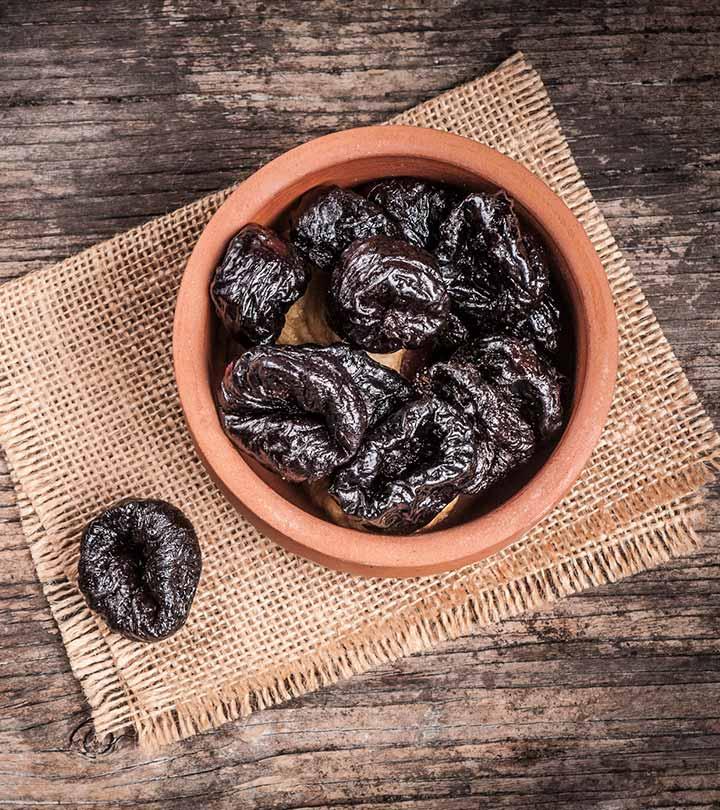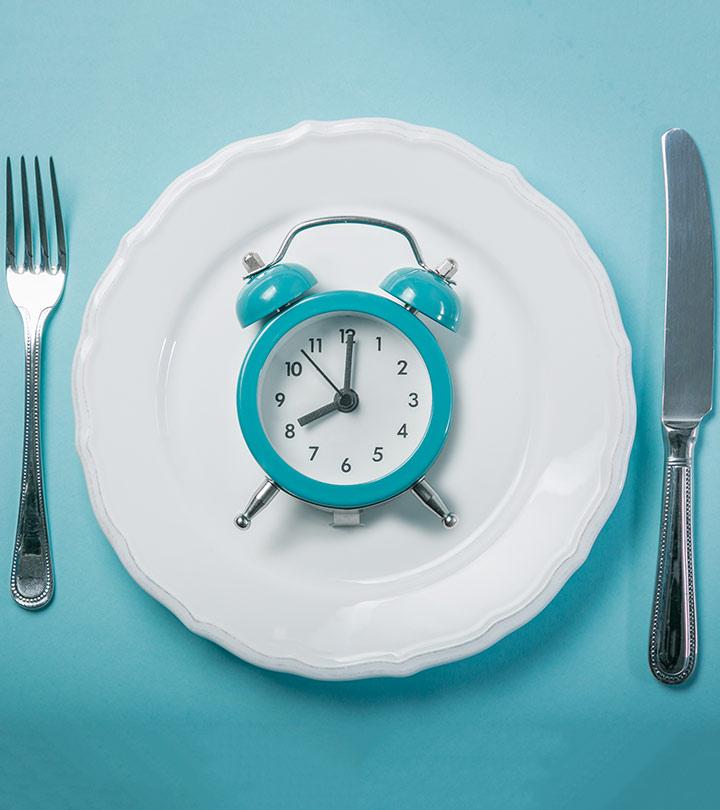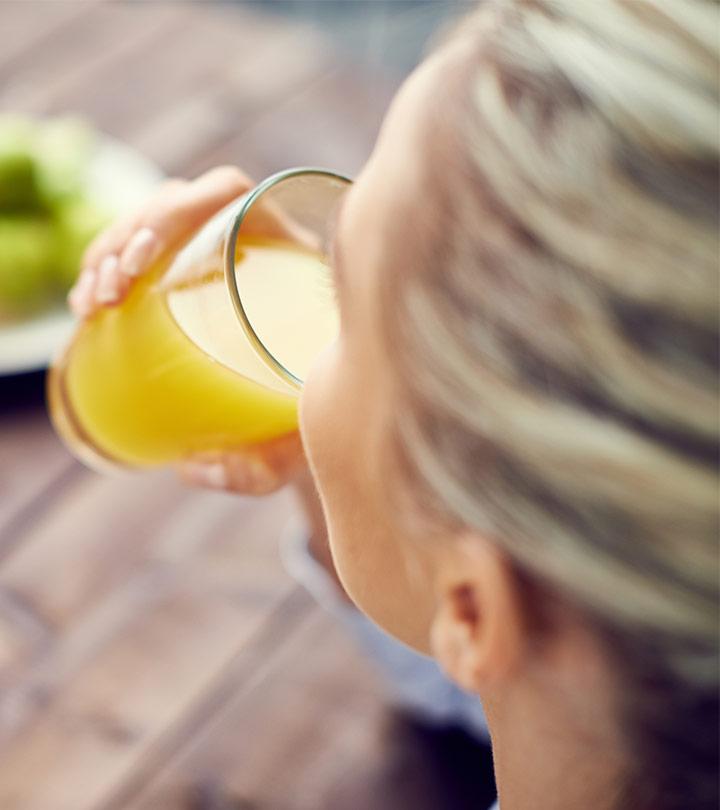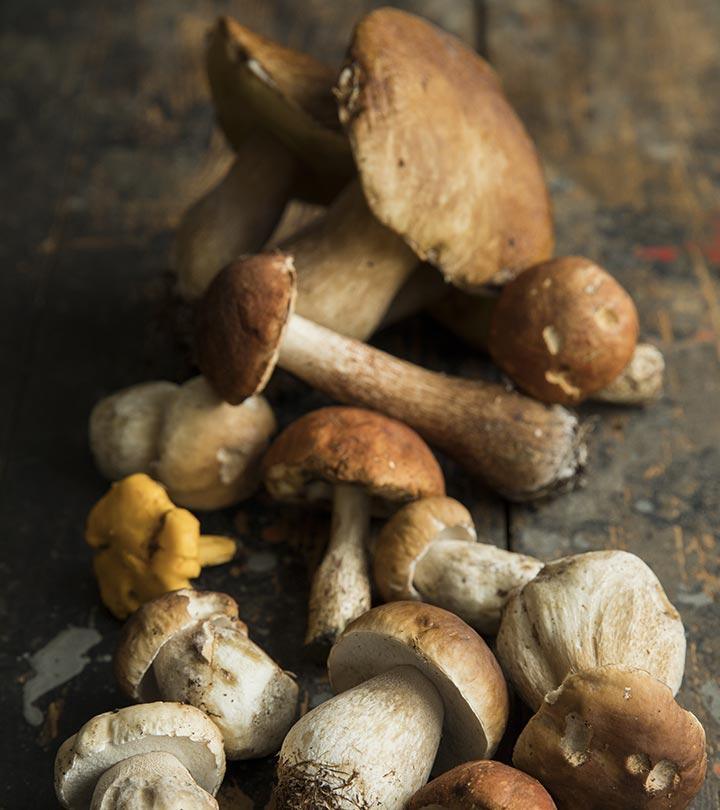17 Home Remedies For Shin Splints + Causes And Prevention
Soothe inflammation in your tibial muscles with these convenient solutions.
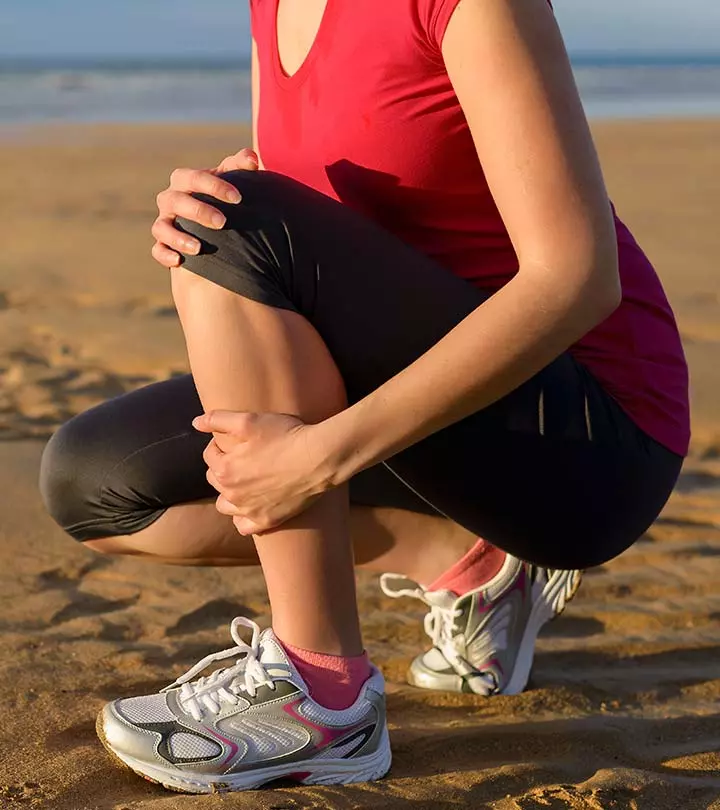
Image: Shutterstock
If you are working out and suddenly experience terrible pain in your lower legs, this could indicate that you have shin splints. Luckily, there are some home remedies for shin splints that may give you some relief.
One of the most prevalent exercise-related issues is shin splints. It produces significant pain in the shin bone, the big bone in the lower leg. Medial tibial stress syndrome is the medical term for this condition. Periostitis and soleus syndrome are other names for shin splints. Overworked muscles, tendons, and bone tissues of the shin bone are frequently the cause of this condition. It is more common in athletes, although it can happen to anyone, depending on their level of physical activity. Although unpleasant, this ailment can be treated quickly and efficiently at home. Are you interested in learning more about this condition? Read on to learn more about shin splints, including the many types, causes, and symptoms, as well as some of the most effective natural remedies for shin splints. Scroll down!
In This Article
How To Get Rid Of Shin Splints Naturally
1. Hot Or Cold Compress
Both hot and cold compresses may help in alleviating the pain and inflammation caused by shin splints (1). Heat increases blood flow to the area, and thus aids in healing and reduces muscle tension.
You Will Need
A hot or cold compress
What You Have To Do
- Place a hot or cold compress on the affected area.
- Leave it on for 15-20 minutes.
How Often You Should Do This
Do this every 4 hours for 5 days.
Gelcys, a marathoner and a blogger, shared her experience of treating shin splints with the R.I.C.E method, which stands for rest, ice, compression, and elevation. She said, “This is the most effective way, in my opinion, to recover from shin splints. I would do this after every run and it definitely helped the pain (i).”
2. Cherry Juice
Cherries contain compounds called anthocyaninsi They are water-soluble pigments that not only give certain plants their color but also offer health benefits. that exhibit antioxidant properties (2). They also possess anti-inflammatory properties (3). Hence, cherry may be used for treating shin splints.
You Will Need
1 glass of unsweetened cherry juice
What You Have To Do
Drink a glass of cherry juice.
How Often You Should Do This
Drink this daily, especially before an intense workout session.
 Did You Know?
Did You Know?3. Hot Tubs With Essential Oils
Hot water reduces inflammation (4). Essential oils are believed to provide calming effects. This may help in relieving pain from shin splints.
You Will Need
- A tub of hot water
- 1-2 teaspoons of any essential oil (lavender or eucalyptus oil)
What You Have To Do
- Prepare a hot bath.
- Add one to two teaspoons of any essential oil to the hot tub.
- Soak yourself and relax in the bath for 15 to 20 minutes.
How Often You Should Do This
Do this after every intense activity to help relax the muscles.
4. Massage
Gently massaging the affected area on your lower leg may help relieve the pain caused by shin splints. For best results, use a warm compress prior to massaging. Warming the muscles may make the massage more effective and relieve the pain and inflammation (5), (6). Massaging with a foam roller can release the tightness in the muscles, improve flexibility and relieve muscle tension.
Also, it is highly recommended that you get enough rest for at least 4 to 5 days following the injury to speed up the recovery. In addition to this, you may also use a cold compress to decrease the swelling of the legs.
5. Ginger Root
Ginger exhibits anti-inflammatory and analgesici An agent that can relieve pain without blocking nerve impulses or altering sensory perception. properties (7). This may help reduce inflammation and swelling caused due to shin splints.
You Will Need
- 1-2 inches of ginger root, cut into small pieces
- A cheesecloth
- 1 bowl of hot water
What You Have To Do
- Shred the ginger root into small pieces.
- Place the shredded ginger in a cheesecloth and soak this in a bowl of hot water for a minute.
- Apply this ginger compress directly to the affected shin and allow it to work for 15 to 20 minutes.
How Often You Should Do This
Do this multiple times a day (as required).
6. Vitamin D
Vitamin D exhibits anti-inflammatory properties (8). A deficiency in this vitamin may make the human body susceptible to inflammation and swelling from injuries. Hence, it is recommended to get the right amount of vitamin D daily. Try consuming foods rich in vitamin D, such as tuna, mackerel, oranges, soy, cheese, and eggs.
Note: Consult a doctor before taking additional supplements for this condition.
7. Epsom Salt
Epsom salt possesses anti-inflammatory properties (9). These may alleviate the pain and inflammation caused by shin splints.
You Will Need
- 1 cup of Epsom salt
- 1 bucket of water
What You Have To Do
- Add Epsom salt to your bathwater in a tub or bucket.
- Use this water for bathing and relaxing your muscles.
How Often You Should Do This
Do this at least 3 times a week.
8. Pickle Juice
A study showed that pickle juice could inhibit muscle cramps (10). This may make pickle juice one of the best cost-effective treatments for shin splints.
You Will Need
1/3 cup of pickle juice
What You Have To Do
Consume pickle juice before or after any intense exercise or activity.
How Often You Should Do This
Drink this juice once a day.
9. Almonds
Almonds are natural antioxidants and possess anti-inflammatory properties (11). This may help in treating the inflammation and pain caused by shin splints.
You Will Need
8-10 almonds
What You Have To Do
- Soak the almonds in water overnight.
- Remove the peel the next day and consume directly or blend them with milk.
How Often You Should Do This
Do this 1-2 times a day.
10. Apple Cider Vinegar
Apple cider vinegar is touted to have anti-inflammatory properties. This may help in treating shin splints.
You Will Need
- 1 tablespoon of apple cider vinegar
- 1 glass of water
- Honey (optional)
What You Have To Do
- Add about one tablespoon of apple cider vinegar to a glass of water. Mix well.
- Add honey and consume this mixture daily.
How Often You Should Do This
Do this once a day.
11. Turmeric
Turmeric contains a compound called curcumin that exhibits powerful anti-inflammatory and analgesic properties (12). This may help in shin splint treatment.
You Will Need
- 1 tablespoon of turmeric powder
- Water
What You Have To Do
- Mix the turmeric powder with enough water to make a thick paste.
- Apply this paste on the affected area.
- Leave it on for 15 to 20 minutes, after which you can wash it off with warm water.
- Additionally, you can also consume turmeric with a glass of hot milk daily.
How Often You Should Do This
You can follow this procedure 1-2 times a day.
12. Pineapple
Pineapples contain an enzyme called bromelain. This enzyme possesses anti-inflammatory and analgesic properties (13). Hence, pineapples may help treat shin splints and its symptoms.
You Will Need
- 1 cup of pineapples
- 1 cup of water
What You Have To Do
- Blend the pineapples with water.
- Alternatively, you can also simply chew on a few pieces of pineapple.
How Often You Should Do This
Do this once a day.
13. Valerian Root
Valerian roots have many pharmacological activities like anti-inflammatory, analgesic, and antispasmodici A type or agent that inhibits the contraction of smooth muscles and helps relieve pain and discomfort. properties (14). This may help the muscles of the shin to relax and reduce the pain.
You Will Need
- 1-2 teaspoons of valerian root
- 1 cup of water
- Honey (optional)
What You Have To Do
- Add valerian root to a cup of water.
- Bring this to a boil in a saucepan.
- Add honey for flavor and consume this before it turns cold.
How Often You Should Do This
Do this 2-3 times a day.
14. Coconut Oil
Coconut oil possesses analgesic and anti-inflammatory properties (15). This makes coconut oil a natural pain reliever. Thus, coconut oil may help in getting rid of shin splints.
You Will Need
1 tablespoon of coconut oil
What You Have To Do
- Rub some coconut oil between your palms.
- Gently massage this oil onto the affected area.
How Often You Should Do This
Do this multiple times a day.
15. Cayenne Pepper
Cayenne pepper (Capsicum annuum) contains capsaicin, which exhibits analgesic and anti-inflammatory properties (16). This may help in treating shin splints.
You Will Need
- 1 teaspoon of cayenne pepper
- 1 glass of warm water
- Honey (optional)
What You Have To Do
- Add about one teaspoon of cayenne pepper to a glass of warm water.
- Consume this daily.
- You can also add honey to this solution for taste.
How Often You Should Do This
Do this 1-2 times a day.
16. Milk
Milk contains vitamin D which possesses anti-inflammatory properties (17). This may help treat the inflammation and swelling caused by shin splints. Additionally, milk also contains calcium, which is good for maintaining healthy bones (18).
You Will Need
1 glass of milk
What You Have To Do
Consume a glass of milk.
How Often You Should Do This
Do this 1-2 times a day.
17. Bananas
Bananas are a rich source of potassium. Potassium has anti-inflammatory properties (19). This may help in treating muscle inflammation that occurs due to shin splints.
You Will Need
1-2 bananas
What You Have To Do
Eat a banana or two daily.
How Often You Should Do This
Consume them on a daily basis.
All these remedies are beneficial in the treatment of shin splints. However, taking some precautions may aid faster recovery. Following the tips given below, along with the remedies, may help avoid the recurrence of the condition altogether.
Preventing Shin Splints
- Indulge in exercises that may strengthen the legs, ankles, and hips.
- Analyze the movements and find out whether any specific movement is causing the development of shin splints.
- Practice yoga stretches that involve stretching the hamstringsi A group of three posterior leg muscles that plays a critical role in human activities like standing and jumping. and calves that may help to lengthen the shin and relieve the pain from shin splints.
- Increase the intake of foods rich in vitamins D and K and calcium, such as cheese, milk, yogurt, sardines, mushrooms, and kimchi.
- Get enough rest to relieve the pain in the shins before the next exercise or workout session.
- Wear the right size of shoes.
- Wear shock-absorbing insoles to reduce the impact of shin splints.
- Use KT tapes to relieve the pressure and strain on the shin muscles. Athletic tape is used for taping the affected area to reduce the pain and inflammation.
 Quick Tip
Quick TipShin splints are the result of overworked and inflamed muscles. Listed below are the common causes of this condition.
Common Causes Of Shin Splints
The pain in the shin may be due to the following reasons:
- Stress Fracture: Repeated stress to the shin bone may result in a small fracture. This fracture, which is an overuse injury, is referred to as stress fracture.
- Compartment Syndrome: The lower leg is made of several muscle compartments, which may become inflamed due to overuse or direct impact injury. This condition is usually referred to as compartment syndrome, and it may also be one of the reasons for the pain in the shins.
According to research, the incidence rate of acute compartment syndrome is estimated to be 0.7 per 100,000 persons in females and 7.3 per 100,000 persons in males. Furthermore, 1-10% of the incidence is associated with a tibial shaft fracture, which is also the most common cause of the syndrome.
Other causes of shin splints are:
- Excessive amounts of force or pressure against your shin bone
- Analytical abnormality such as flat foot syndrome
- Improper training
- Running on uneven terrain
- Using worn-out shoes
- A sudden increase in the duration or intensity of exercising
Shin splints are also accompanied by mild to moderate symptoms. They are as listed below.
Symptoms Of Shin Splints
- Lower leg pain
- Pain while exercising
- Pain on one or both sides of the shin bone
- Muscle pain
- A feeling of tenderness or soreness along the inner leg
- Weak and numb feet
- Swelling in the lower leg
You can incorporate a few stretching exercises into your daily routine to relax your leg muscles and ease these symptoms. Check them out in the next section.
Stretches For Shin Splints
- Toe Taps
Sit with your legs extended and toes flexed upward. Gently tap your toes on the ground to stretch your shin muscles. Do this for 20-30 seconds. - Achilles Stretch
Stand with one foot forward and one foot back. Bend your front knee and keep your back leg straight. Lean forward slightly to stretch the calf and shin. Hold for 20-30 seconds. - Towel Stretch
Sit on the floor with your legs extended. Wrap a towel around your toes and gently pull back to flex your feet and stretch your shins. Hold for 20-30 seconds. - Ankle Circles
Sit or lie down with your legs extended. Rotate your feet in circles, both clockwise and counterclockwise. Do it for 30 seconds in each direction.
Infographic: 5 Easy Ways To Manage Shin Splints
Shin splints are a common condition characterized by pain and discomfort in the lower leg. While they can be uncomfortable and affect your daily activities, there are several measures you can take to reduce pain and ensure fast healing. We have compiled a list of simple and easy ways to help manage and prevent the pain. Check out the infographic below to know more.

Illustration: StyleCraze Design Team
Shin splints refer to pain in the shinbone, the major front bone in the lower leg, due to overuse of the shinbone, the surrounding muscles, tendons, and bone tissue. This condition is most common in athletes who have recently increased their workout intensity or modified their training routines but may affect anyone involved in intense or prolonged physical activities. Swelling, weakness, and tenderness in the surrounding area are some common symptoms that may accompany lower leg pain. Home remedies for shinbone splints like banana, turmeric, cayenne pepper, pickle juice, rest, hot or cold compress, massage, and essential oils can help alleviate mild to moderate pain and swelling. Treatments like acupuncture, chiropractic care, and physical therapy may also prove benficial in releiving the pain. However, contact your healthcare provider if the pain is too severe to be managed with these.
Frequently Asked Questions
How to treat shin splints during pregnancy?
During pregnancy, shin splints may be treated naturally with the remedies mentioned above. However, pregnant women may also follow the tips mentioned below to get relief:
- Elevate your legs as often as you can.
- Sleep on your side.
- Consume plenty of fluids.
- Keep a check on your weight.
- Indulge in gentle exercises.
- Use a cold compress on the affected area.
How long does it take for shin splints to heal?
The pain that accompanies shin splints usually vanishes in 3 to 4 weeks. Nevertheless, shin splints may take 3 to 6 months to heal completely.
Is walking good for shin splints?
No. It is widely recommended to rest and ice a shin splint to facilitate recovery. Walking can put the stress of body weight on a shin splint, which may cause further damage.
How do you know if shin splints are serious?
A shin splint may require immediate medical attention if it has been persistently painful or become increasingly more painful even through a few weeks of rest. It may also be serious and a sign of an infection if the area is extremely swollen, red, and painful.
How do I know if I have shin splints or stress fractures?
You will feel worsening pain when you run and pain that is localized to a small area if you have a stress fracture. On the contrary, the pain from a shin splint will be spread over a wider area.
Do compression socks help with shin splints?
Yes, compression socks may help with a shin splint and keep it from progressing to a stress fracture. Wear compression socks when you need to walk or run when you are recovering from a shin splint.
Do podiatrists deal with shin splints?
While orthopedists are most commonly referred to for treating a shin splint, a podiatrist may also help you recover from the condition. Podiatrists focus on load optimization and may recommend a change of footwear, among other things.
Key Takeaways
- Shin splints are often caused by overworked muscles, tendons, and bone tissues of the shin.
- Swelling, pain, and weakness in the lower legs are some of the common symptoms of shin splints.
- Putting a hot or cold compress on the affected area may reduce pain and inflammation.
- Massaging the area gently or taking Vitamin D supplements might treat this condition.
- Practice yoga or stretching exercises and wear shock-absorbing socks to reduce the risk of shin splints.
Learn how to recover from shin splints easily. Check out some easy tips on stretching, strengthening, and resting to get back to your regular routine from the video given below.
Personal Experience: Source
StyleCraze's articles are interwoven with authentic personal narratives that provide depth and resonance to our content. Below are the sources of the personal accounts referenced in this article.
i. Cause, treatments, and prevention of shin splintshttps://theempireunleashed.com/2015/12/22/cause-treatments-and-prevention-of-shin-splints/
References
Articles on StyleCraze are backed by verified information from peer-reviewed and academic research papers, reputed organizations, research institutions, and medical associations to ensure accuracy and relevance. Read our editorial policy to learn more.
- Malanga, Gerard A et al. “Mechanisms and efficacy of heat and cold therapies for musculoskeletal injury.” Postgraduate medicine vol. 127,1 (2015): 57-65.
https://pubmed.ncbi.nlm.nih.gov/25526231/ - Bell, P G et al. “The role of cherries in exercise and health.” Scandinavian journal of medicine & science in sports vol. 24,3 (2014): 477-90.
https://pubmed.ncbi.nlm.nih.gov/23710994/ - Tall, Jill M et al. “Tart cherry anthocyanins suppress inflammation-induced pain behavior in rat.” Behavioural brain research vol. 153,1 (2004): 181-8.
https://pubmed.ncbi.nlm.nih.gov/15219719/ - Mooventhan, A, and L Nivethitha. “Scientific evidence-based effects of hydrotherapy on various systems of the body.” North American journal of medical sciences vol. 6,5 (2014): 199-209.
https://www.ncbi.nlm.nih.gov/pmc/articles/PMC4049052/ - Vickers, Andrew et al. “Massage therapies.” Western Journal of Medicine vol. 175,3 (2001): 202–204.
https://www.ncbi.nlm.nih.gov/pmc/articles/PMC1071543/ - Waters-Banker, Christine et al. “Investigating the mechanisms of massage efficacy: the role of mechanical immunomodulation.” Journal of athletic training vol. 49,2 (2014): 266-73.
https://www.ncbi.nlm.nih.gov/pmc/articles/PMC3975781/ - Rayati, Farshid et al. “Comparison of anti-inflammatory and analgesic effects of Ginger powder and Ibuprofen in postsurgical pain model: A randomized, double-blind, case-control clinical trial.” Dental research journal vol. 14,1 (2017): 1-7.
https://www.ncbi.nlm.nih.gov/pmc/articles/PMC5356382/ - Krishnan, Aruna V, and David Feldman. “Mechanisms of the anti-cancer and anti-inflammatory actions of vitamin D.” Annual review of pharmacology and toxicology vol. 51 (2011): 311-36.
https://pubmed.ncbi.nlm.nih.gov/20936945/ - Rudolf, R D. “The use of Epsom salts, historically considered.” Canadian Medical Association journal vol. 7,12 (1917): 1069-71.
https://www.ncbi.nlm.nih.gov/pmc/articles/PMC1584988/ - Miller, Kevin C et al. “Reflex inhibition of electrically induced muscle cramps in hypohydrated humans.” Medicine and science in sports and exercise vol. 42,5 (2010): 953-61.
https://pubmed.ncbi.nlm.nih.gov/19997012/ - Kamil, Alison, and C-Y Oliver Chen. “Health benefits of almonds beyond cholesterol reduction.” Journal of agricultural and food chemistry vol. 60,27 (2012): 6694-702.
https://pubmed.ncbi.nlm.nih.gov/22296169/ - Menon, Venugopal P, and Adluri Ram Sudheer. “Antioxidant and anti-inflammatory properties of curcumin.” Advances in experimental medicine and biology vol. 595 (2007): 105-25.
https://pubmed.ncbi.nlm.nih.gov/17569207/ - Pavan, Rajendra et al. “Properties and therapeutic application of bromelain: a review.” Biotechnology research international vol. 2012 (2012): 976203.
https://www.ncbi.nlm.nih.gov/pmc/articles/PMC3529416/ - Devi, V. Subhadra, and M. Gopal Rao. “Valeriana wallichii–a rich aroma root plant.” World J. Pharm. Pharm. Sci 3 (2014): 1516-1525.
https://www.semanticscholar.org/paper/VALERIANA-WALLICHII-A-RICH-AROMA-ROOT-PLANT-A-Devi-Rao/40184fa762432381ae30a9800daf36b0c3b9c8f6 - Intahphuak, S et al. “Anti-inflammatory, analgesic, and antipyretic activities of virgin coconut oil.” Pharmaceutical biology vol. 48,2 (2010): 151-7.
https://pubmed.ncbi.nlm.nih.gov/20645831/ - Srinivasan, Krishnapura. “Biological Activities of Red Pepper (Capsicum annuum) and Its Pungent Principle Capsaicin: A Review.” Critical reviews in food science and nutrition vol. 56,9 (2016): 1488-500.
https://pubmed.ncbi.nlm.nih.gov/25675368/ - Yin, Kai, and Devendra K Agrawal. “Vitamin D and inflammatory diseases.” Journal of inflammation research vol. 7 69-87.
https://www.ncbi.nlm.nih.gov/pmc/articles/PMC4070857/ - Wadolowska, Lidia et al. “Dairy products, dietary calcium and bone health: possibility of prevention of osteoporosis in women: the Polish experience.” Nutrients vol. 5,7 2684-707.
https://www.ncbi.nlm.nih.gov/pmc/articles/PMC3738995/ - Miller, Kevin C. “Plasma potassium concentration and content changes after banana ingestion in exercised men.” Journal of athletic training vol. 47,6 (2012): 648-54.
https://www.ncbi.nlm.nih.gov/pmc/articles/PMC3499889/
Read full bio of Dr. Sudhansu Singh
Read full bio of Arshiya Syeda
Read full bio of Dipti Sharma





